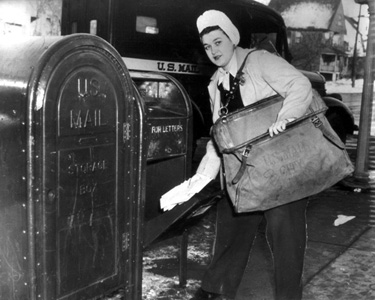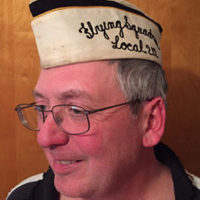
I enter the arena. With its muted lighting, my pupils hurriedly adjust to the gangling action. A flurry of whirling dervishes flashes before my eyes and I hear the announcer bellow these names in a cacophony of flourishing tones; Racer McChaser, Roxanna Hardplace, and Peaches N. Creamy. As the bevy of roller-skating raucous races towards where I am standing, a human spill of eight female carcasses streaks across the wooden floor. A whistle is blown and the combatants pick themselves up and prepare for another round of roller rink warfare. My jaw drops in awe; I am witness to my first match of the Detroit Derby Girls.
Freeze that frame. Rewind to 1967. Boston Marathon, an entrant named K. Switzer. On April 19th of that year, this K. became the first woman to receive a bib number and compete officially in this most historic of running events. K. (Katherine) was a student at Syracuse University and wanted to train with the men’s cross country team. Arnie Briggs, a mailman and assistant coach with the cross country team, agreed to take her on. Her goal was to compete in the Boston Marathon, up until that time an exclusively male event. She entered under “K.” as a subterfuge for Katherine and ran with a hooded sweatshirt covering her face and long hair. When the hood fell off her head during the race revealing her as a woman, the head official of the Boston Marathon, Jock Semple, jumped off a press truck and yelled “get out of my race” as he tried to rip the #261 off of her outfit. Mailman Arnie, along with her boyfriend and running mate, Tom Miller shoved Semple aside and sent him flying. She finished the race and the photographs taken of the incident made world headlines. In her words; “I started the Boston Marathon as a girl, and finished the race as a grown woman.”
These women are tough, and there are many other stories to tell of strong females in the sporting world. In honor of Woman’s History Month, though, I would like to share with my readers the history of the women I rub elbows with every day on the workroom floor; the female letter carriers of the United States Postal Service. I am going to use a term that I may have to explain and defend but I am going to use it anyway; bar none, they are the toughest broads I have ever known and if need be I will say that on bended knees with a bowed head.
As a child growing up in the 60’s, I have no recollection of any female letter carriers in my neighborhood. Jack pushed his cart down the street and waved hello to me in his jolly fashion. It didn’t seem odd at all; that was life in the suburbs in the sixties. Hell, my mother didn’t even have her driver’s license until much later. Carrying mail, as well as just about all other important functions of society’s work, was a man’s job. Them was the “Good Ole Days” (a magazine that I still deliver to this day!).
According to the United States Post Office archive, “the first known appointment of a woman to carry mail was on April 3, 1845, when Postmaster General Cave Johnson appointed Sarah Black to carry the mail in Charleston, Maryland.” At least two woman, Susanna Brunner in New York, and Minnie Westman in Oregon, were known to be mail carriers in the 1880s. Mary Fields, nicknamed “Stagecoach Mary”, was the first African-American woman to work for the Postal Service, driving a stagecoach in Montana from 1895 to 1900. But despite these exceptions, the letter carrier craft remained nearly all male for many decades.
Women letter carriers made their first appearance on city streets during World War I and World War II, taking the places of men drafted into military service. Almost all of these women carried the mail temporarily, relinquishing their jobs as men returned home from war. By 1956, only 92 women nationwide served as city carriers.
But the times they were a changin’. With events in the forefront such as the ludicrous all male Boston Marathon and the Women’s Liberation Movement calling attention to the inequality between the sexes, the United States Postal Service became one of the havens for women to find a job with ‘equal pay for equal work.’ By 1971, women carriers reached the 5,000 mark. By 1982, women carriers topped 16,000. By 2006, 60,000 women comprised more than 26 percent of the city carrier workforce. Estimates of 2013’s carrier workforce push towards 40 percent of women carrying the US mails.
I have worked side by side with these women for the last twelve and a half years. As amazed as I am by the Detroit Derby Girls, or Katherine Switzer breaking the “no female” barrier at the Boston Marathon, I am more amazed by my female coworkers’ diligence at delivering the US mails on a daily basis. I know how I feel at the end of a day, and I see women half my size rise up and greet me at the time clock each and every morning. I was so impressed, I married one of you. For you all, Happy Women’s History Month!
Photo: Jeannette Lee became Chicago’s first female letter carrier in 1944. Postal Museum.










